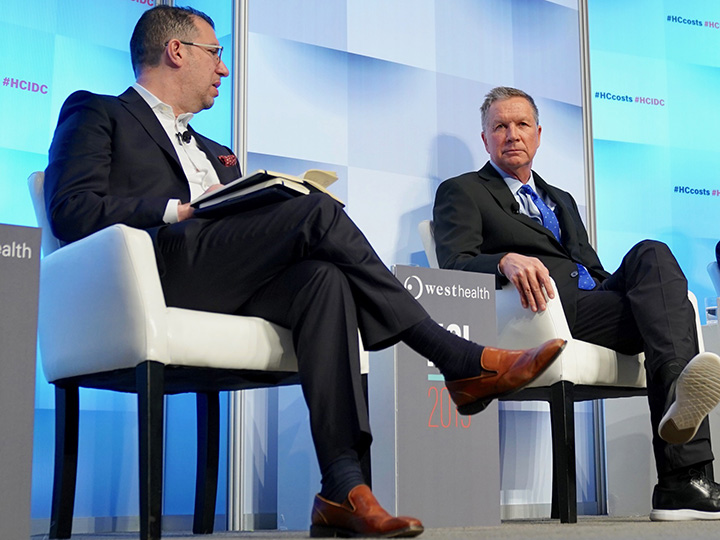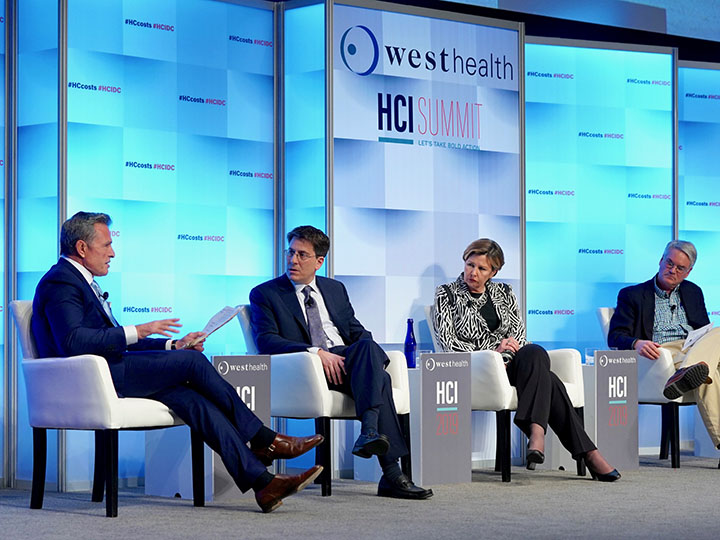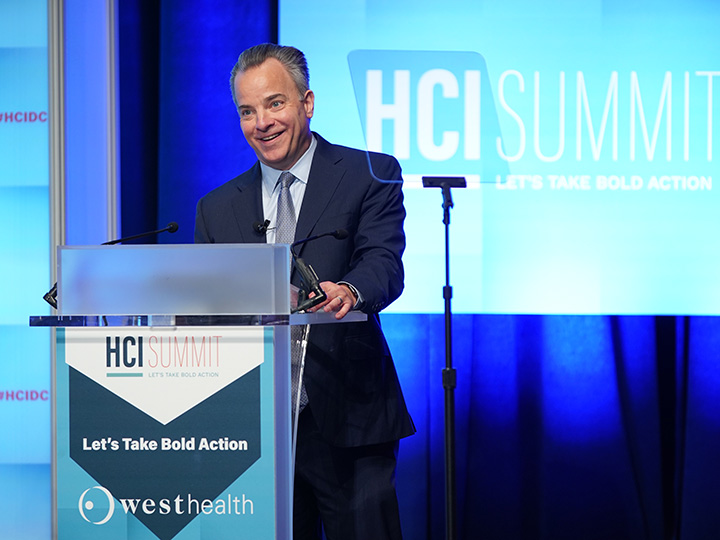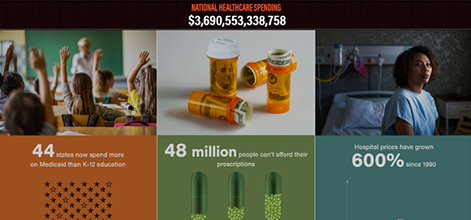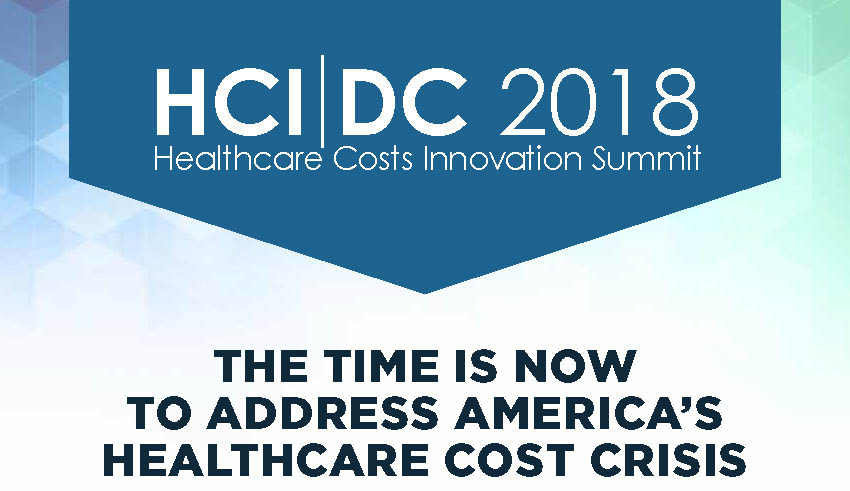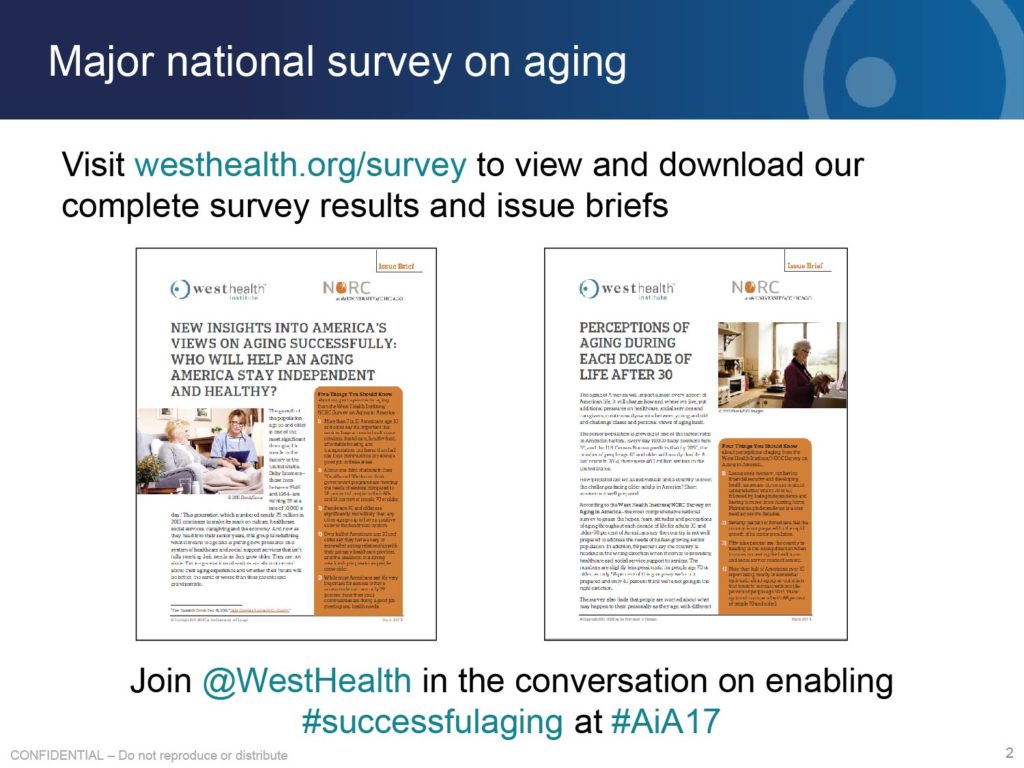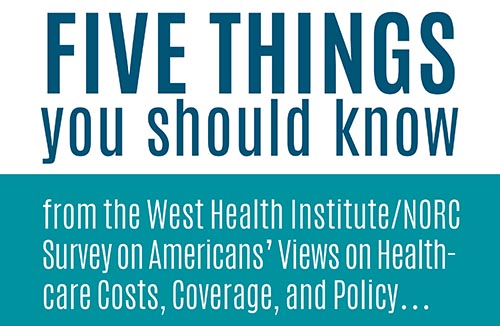The Opportunity
Prescription drug prices are at unprecedented levels, creating access barriers for individuals who need lifesaving medications while drug company CEO salaries and profits soar. Despite promises to lower prices, the pharmaceutical industry kicked off 2019 with a slew of price hikes affecting a significant number of medications. Meanwhile, we know from a poll released last year by NORC and the West Health Institute that 1 in 3 Americans can’t afford their drugs.
Our Goal
Addressing the excessive prices of prescription drugs provides the most immediate opportunity for relief of exorbitant healthcare prices overall. No one in America should have to worry about going bankrupt when they get sick or choose between filling their prescription and paying rent. We need to rebalance incentives to increase innovation and price competition and prioritize patient access and affordability. Ultimately, we need to ensure that Americans can access the prescription drugs they need at prices they can afford.
Taking Action
Medicare must be allowed to negotiate directly with manufacturers on prescription drug prices to get the best deal for patients and the federal government. As the largest purchaser of prescription drugs in the country—with 43 million seniors and people with disabilities accessing prescription drug coverage through Part D—Medicare should be able to leverage its purchasing power with pharmaceutical companies to get lower prices.
Key steps to lowering drug prices include:
- Allowing Medicare to negotiate drug prices, we support:
- Lowering list prices for prescription drugs;
- Increasing competition in the generic and biosimilar industry;
- Eliminating anticompetitive behaviors by some brand-name manufacturers that block or delay competition;
- Testing new reimbursement models that promote value, like outcomes-based purchasing;
- Investing in comparative effectiveness research and its dissemination to understand the value of individual prescription drugs; and
- Allowing states responsible flexibility to test innovative models for purchasing prescription drugs.
With 90 percent of America concerned about the high cost of prescription drugs, we must keep pressure on our elected officials to act in the nation’s interest through sustained and effective engagement.
Featured National Initiative: Civica Rx
Civica Rx exists in the public interest as a non-stock, non-profit corporation committed to stabilizing the supply of essential generic medications. Founded by seven leading hospital systems concerned about generic drug shortages and three philanthropic members passionate about improving healthcare, including the Gary and Mary West Foundation, Arnold Ventures and the Peterson Center on Healthcare. As of April 2019, more than 30 Health Systems have joined Civica as Governing, Founding and Partnering members, representing over 900 U.S. hospitals and equaling approximately 180,000 licensed beds or 27% of the nation’s licensed beds. Civica Rx will provide patients with greater access to more affordable drugs and better, safer care. Caregivers will be better able to focus on the delivery of great care, and not spend time searching for drugs in shortage or developing alternative therapies.
Our Focus Areas - Three Common-Sense Reforms
Three common-sense reforms: lowering the cost of prescription drugs, accelerating the adoption of value-based care models, and increasing price transparency for consumers and employers. West Health, a family of nonprofit and nonpartisan organizations that spans research, policy and philanthropy, convened major figures from the worlds of healthcare, business, policy and media for a national summit on how to best drive these reforms to create a system that is more transparent, competitive, affordable, person-centered, quality-driven and sustainable.

Learn More About the 2019 Healthcare Costs Innovation Summit
The rising cost of healthcare is a growing and major threat to our economy, our financial security, and our individual health. For too long, we’ve been paying too much and not getting enough in return. The U.S. healthcare system is on an unsustainable cost trajectory. We have an urgent need to address this cost crisis so that healthcare can become more accessible and more affordable for all Americans. Now is the time.
Lowering Healthcare Costs News
 October 2, 2023
October 2, 2023
Medicare Part B Spending on Macular Degeneration Treatments Associated With Manufacturer Payments to Ophthalmologists
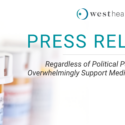 August 28, 2023
August 28, 2023
Regardless of Political Party, Americans Overwhelmingly Support Medicare Drug Price Negotiations
 December 5, 2022
December 5, 2022
Stress Prominent Among U.S. Adults Struggling to Pay for Care
Publications and Resources
West Health provides a variety of published reports, findings and data, as well as resources that are free and available for use.
